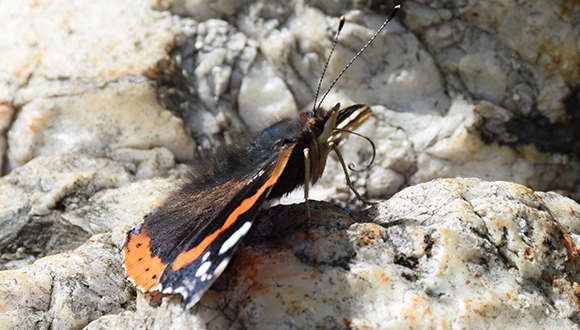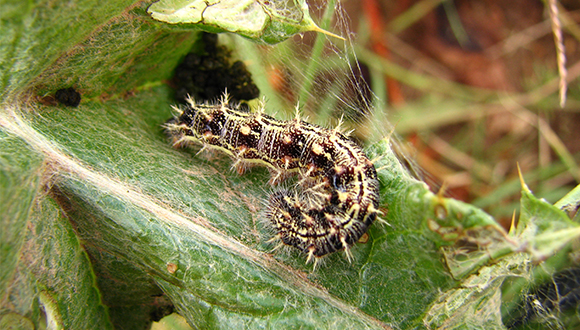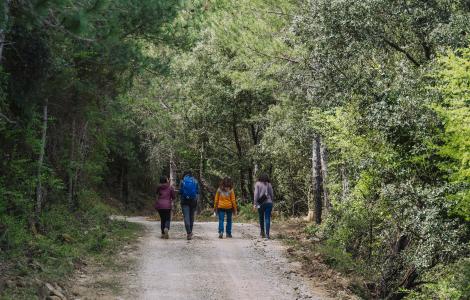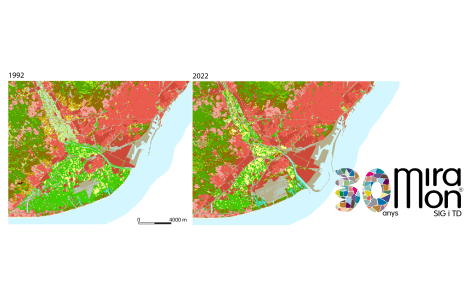Flowers and butterflies lose their synchronicity due to climate change

A study finds that high temperatures and low rainfall cause a timing mismatch between the flowering period of plants and the time of flight of butterflies. The moments of maximum florescence and butterfly abundance are separated by a mean time of 70 days, increasing in years with marked drought.

For 17 years, researchers from CREAF, the Museum of Natural Sciences of Granollers (MCNG) and the University of the Balearic Islands have been studying interactions between flowers and butterflies. As adults, these insects obtain their food from flower nectar. However, data obtained from the Aiguamolls de l'Empordà Natural Park show that in recent years there is a greater separation between the moment of maximum florescence of plants and the moment that butterfly abundance is highest. The culprit of this phenomenon is climate change: temperatures are rising and drought is increasingly pronounced. This changed climate causes synchronization problems for the 12 species of butterflies studied and the flowers providing their foodstuffs.
"Butterflies are organisms which are highly dependent on climate," says Constantí Stefanescu, CREAF and MCNG researcher. Their life cycles consist of three phases of development before reaching adulthood as a butterfly —the egg, the caterpillar, and the chrysalis— all very affected by outdoor temperatures. "In general, higher temperatures speed up development, from the egg to the emergence of the butterfly, but this also depends on other factors. For example, development can be negatively affected by rainfall shortages and withering of the plants feeding the caterpillars," says Dr. Stefanescu.
Why is this situation worrisome in the Mediterranean? This is because the study results highlight drought as the most important factor explaining asynchrony between butterflies and flowers, and precisely because present knowledge dictates that drought will continue to worsen in the Mediterranean due to climate change. In extreme cases, it has been found that the separation between Lepidoptera and flowers can reach 160 days, and if this continues it could lead to major declines in butterfly populations. And, in turn, if the efficiency of pollination by butterflies decreases (as well as other insects due to the same reasons) this would lead to declines in plant populations as well.
Caterpillars may suffer the greatest decoupling
The study, published in the journal Oikos, shows that drought affects all adult butterflies, be they generalist species or specialists associated with a particular plant. However, the CREAF researcher warns, "the strongest dependency between plants and butterflies is during the caterpillar phase, especially if it only feeds on one plant species. As a result, during this phase a lack of synchronicity could be more critical."
Butterflies are rather generalist in terms of the flower species that they visit to get nectar (they visit more than one kind of flower), but they can be quite specialist in terms of what plants they lay their eggs on. This plant will be the one that the caterpillars use to develop, called the foodplant. A decoupling between the caterpillar phase and the growth of the foodplant could have disastrous consequences, above all for the survival of the caterpillars, and as a consequence for the final abundances of adult butterflies.

ARTICLE
Donoso I., Stefanescu C., Martinez-Abraín A. and Traveset A. Phenological asynchrony in plant-butterfly interactions associated with climate: a community-wide perspective. (2016) Oikos. DOI: 10.1111/oik.03053
Notícies relacionades

L’IPBES publica dos informes per transformar la manera com ens relacionem amb la natura, conservar-la i sobreviure

L’impacte social de la recerca es consolida a la cultura científica del CREAF



